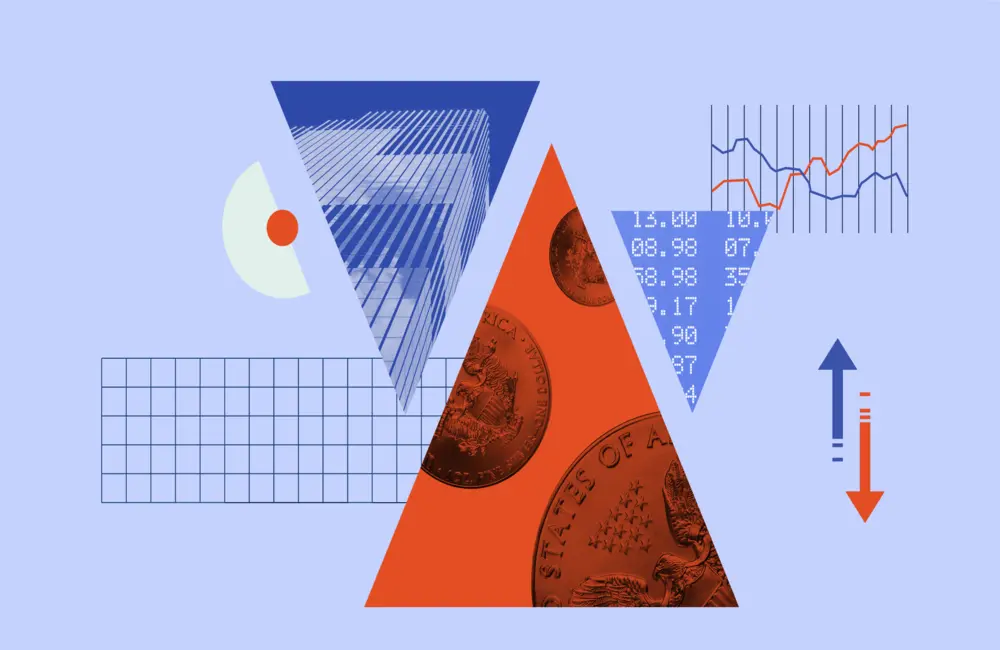ASX futures were 44 points or 0.7 per cent lower at 6462 as of 7:00am AEDT on Wednesday, suggesting a drop at the opening.
Stocks on Wall Street ended the day mixed on Tuesday, rising and falling, as investors parsed a flurry of economic data and comments from Federal Reserve officials.
All three spent most of the morning in positive territory, but fell into negative territory by midday. The Dow Jones Industrial Average, which fell into a bear market on Monday, declined 0.4% Tuesday as of 4 p.m. ET. The S&P 500 fell 0.2 percent, ending at its lowest level of 2019 for a second consecutive day. The technology-heavy Nasdaq Composite gained 0.25 percent.
Neel Kashkari, president of the Federal Reserve Bank of Minneapolis, reiterated the central bank’s commitment to tamp down stubbornly elevated inflation in an interview Tuesday with The Wall Street Journal. “We’ve got a lot of tightening ahead in the pipeline,” Mr. Kashkari said, while adding that the Fed is “committed to getting back to price stability,” but also understands “there is a potential to overdo it.”
In the commodity markets, Brent crude oil was up 2.51 per cent at $US86.17 a barrel and gold added 0.42% to US$1,629.20.
In the local bond market, the Australian 2 Year government bond yield decreased to 3.43%, while the 10 Year inched higher to 4.02%. Offshore, the 2 Year US Treasury notes yield climbed to 4.29% and 10 Year US Treasury notes are back to 3.96%
The Australian dollar had sunk as low as 64.24 US cents from its 64.54 US cent at the close. The Wall Street Journal Dollar Index, which measures the U.S. currency against 16 others, ticked up to 105.16.
Asia
Chinese shares rose, boosted by liquor makers and travel-related sectors, as investors anticipated a pick up in consumption during the National Day holiday at the beginning of October. Shares in the three major airlines Air China, China Eastern Airlines and China Southern Airlines jumped 4.5%-5.4%, and shares in China Tourism Group Duty Free rose 4.1%. Liquor makers also gained, with Wuliangye Yibin up 5.4% and Kweichow Moutai up 1.3%. The Shanghai Composite Index gained 1.4% to 3093.86, recovering from its four-month-low close Monday. The Shenzhen Composite Index rose 2.1 percent, and the ChiNext Price Index gained 2.2 percent.
The Hang Seng Index of Hong Kong slipped 5.17 points, or less than 0.1 percent, to 17,860.31, as gains in consumer-related sectors were offset by losses among electronics makers. Shares of airlines, restaurants and travel service providers gained to follow the A-share market, as the National Day holiday in October raised expectations of an uptick in consumption. Haidilao, a hot pot chain operator, climbed 6.4 percent, Air China rose 5.8 percent and Tongcheng Travel surged 7.6 percent. The hotel and restaurant booking service provider Meituan rose 4.0 percent (Meituan also has a delivery arm), while Alibaba Group fell 1.0 percent. Electronics shares have retreated as sluggish smartphone demand takes a toll, with Sunny Optical off 2.2%.
Stocks in Japan were higher, as game, food and consumer shares led gains after recent market sell offs on concerns that major central banks would tighten their policies. The Konami Group was up 4.0%, Suntory Beverage & Food was up 2.2% and Kao rose 2.5%. The Nikkei Stock Average added 0.5% to 26571.87.
Europe
European markets fell on Tuesday. The pan-European STOXX Europe 600 Index closed down 0.13%, Germany's DAX fell 0.72%, and France’s CAC ended down 0.27%.
In London, the FTSE 100 slipped 0.5% Tuesday on fears that the inflationary consequences of U.K. economic policy might force the Bank of England to execute an emergency rate hike, said Joshua Mahony, senior market analyst at IG.
“With Liz Truss and Kwasi Kwarteng on the ropes less than a month into their new roles, traders will be hoping that this acts as a stark warning as to the necessity of being fiscally responsible when so much desire to spend their way out of this crisis,” Mr. Mahony said.
Among the index’s biggest fallers were the real-estate portal Rightmove PLC, down 8.9%; the energy supplier SSE PLC, down 7.3% and the homes builder Taylor Wimpey PLC, which moved 7.2% lower.
North America
Stocks on Wall Street ended mixed on Tuesday and veered between gains and losses as investors sifted through a bout of economic data and a new round of comments from Federal Reserve officials.
All three indexes had spent much of the morning in the green before sliding by midday. The Dow Jones Industrial Average, in bear-market territory as of Monday, was down 0.4% as of 4 p.m. ET Tuesday. The broader S&P 500 fell 0.2 percent, and continued to close at its lowest level of the year for a second consecutive day. The technology-heavy Nasdaq Composite rose 0.25%.
The declines on Tuesday extend a brutal year for financial markets. Stocks and bonds have both plunged deeply this year, a rare twin slide that shows just how rattled many investors are. The Dow, the S&P and the Nasdaq are all on track for their worst first nine months of a year since 2002. All three dropped five consecutive trading days through Monday.
Inflation, doggedly high this year, has muddied the markets. The Federal Reserve, in turn, has been increasing interest rates, to try to cool what it has worried is an overheated economy, stoking fears that the central bank could push the United States into recession. This summer some investors hoped the rate increases were nearing an end, and stocks bounced back for a short time. Now, investors are starting to adjust to the reality that bigger interest-rate increases — and softer global economic growth — are here to stay for some time.
Neel Kashkari, the president of the Federal Reserve Bank of Minneapolis, reiterated the central bank’s commitment to knocking down stubborn and elevated inflation in an interview Tuesday with The Wall Street Journal. “Certainly back in December and again in January, it looked like we were missing” the 2 percent target, he said, adding that the Fed remains “committed to bringing our balance sheet back to normal, but there’s also a recognition that we are willing to be patient and there is a risk of overdoing it.”
Stocks have been haunted by a fast increase in interest rates, said Mimi Duff, a managing director at GenTrust, a registered investment adviser with around $3 billion in assets under management. “I do believe that we have to start seeing the rates stop the hemorrhaging before we sort of bottom out in equities,” she said.
Against a dark muck of macroeconomic unknowns, traders and investors were simply loath to call a bottom.
“The equity market is clearly watching this ratchet higher of terminal rates in the US,” said Charles Diebel, head of fixed income at Mediolanum International Funds. “The higher the terminal rate goes — and it needs to move there to address the inflation threat — the larger the economic contraction,” he said.
“Once we get budgetary financial conditions like this, it has always broken one way or another,” he said.
On the economic front, data released Tuesday revealed that companies cut orders for durable goods for the second consecutive month. Home prices kept posting large year-over-year gains, but the rate of that increase decelerated. Home prices dropped, on a month-over-month basis.























